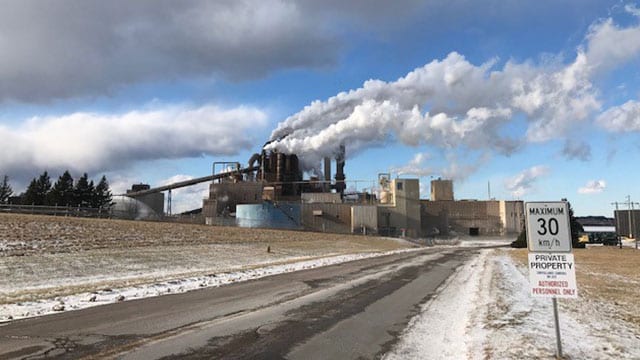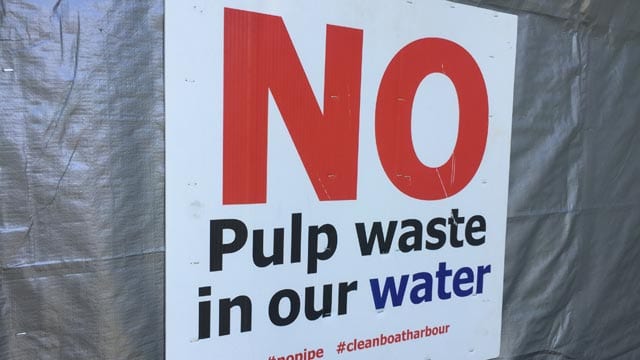
The Nova Scotia government is requiring additional study on a controversial proposal to pipe 85 million litres of the Northern Pulp mill’s treated waste into the Northumberland Strait.
The Northern Pulp paper mill has become a flashpoint, with its plan to pump waste into rich fishing grounds pitting forest industry workers against fishermen, environmentalists and even the P.E.I. government.
In an environmental review released Friday, Environment Minister Margaret Miller said the company must submit a “focus report that provides more information” in numerous areas.
“I did not take this lightly, we made our decision as we always do based on science and available evidence,” Miller said.
“The company did a commendable job, but it was obvious some things were lacking.”
Northern Pulp will get new terms of reference for the study by April 24, and it will have up to one year to submit a report.
Miller said the legislated January 2020 deadline to close the current treatment facility in Boat Harbour is “still in effect,” though the company has asked for an extension.
The mill’s parent company, Paper Excellence, said Friday it will collect the data, but more time will “clearly” be needed.
“We are confident in our plan and we will provide more information as per the government’s request, however as we’ve seen throughout this project – these requests take time,” CEO Brian Baarda said in a statement.
“We require an extension to the legislated deadline, so we have enough time to collect the information and to finish our new wastewater treatment facility.”
Tory Leader Tim Houston said the timeline for the company to come up with answers is very tight.
“The clock is definitely ticking. When you look at the non-decision today, there are a lot of questions. I don’t know if Northern Pulp has met the standard, or if the government has moved the standard to a higher requirement.”
“Meanwhile we have Nova Scotians across the province under severe stress the government has managed to pass this stress along a little longer.”
NDP Leader Gary Burrill said the company had come up short on its proposal.
“The Department of the Environment has said they failed to provide adequate information about human health impacts, about fish habitat, about chemical content of the effluent,” he said.
“What is this about if it’s not about fish habitat, human health impacts and the chemical composition of the effluent?”
In a briefing before Miller spoke, Lorrie Roberts, executive director of policy for the Environment Department, outlined the types of information that are still required from the company.
“Chemical composition of the wastewater needs to be known in order to understand the potential environmental effects, we will be asking for that information,” said Roberts.
She said the department is also asking Northern Pulp to realign and re-evaluate the onland portion of the pipeline so that it is not located in the roadbed of Highway 106.
“For the marine portion of the pipeline we need to better understand how it is impacted by ice in the winter,” Roberts said.
As well, the receiving water study was primarily based on data from Pictou Harbour, Roberts said, and it would have to be updated with data from Caribou Harbour.
She said the department also needs to understand how the facility design will achieve the outcomes proposed by the company.
“To do that we will be asking for information to better understand the treatment technology and how it will achieve the performance criteria that are proposed. We need to understand if it can treat the amount of wastewater that will be flowing through the mill and we need more data in order to be able to evaluate that.”
The department will also need additional information on how pipeline leaks will be detected and mitigated, and also on how the project will impact fish and fish habitat “including lobster.”
Further information will also be needed on the potential effects to the Town of Pictou’s water supply and to wetlands along the pipeline’s route as well as a monitoring plan for air quality and more information on the potential effects to human health.
Roberts said an updated Mi’kmaq ecological knowledge study would also be required.
The heavily polluted treatment lagoon is on the edge of the Pictou Landing First Nation.












